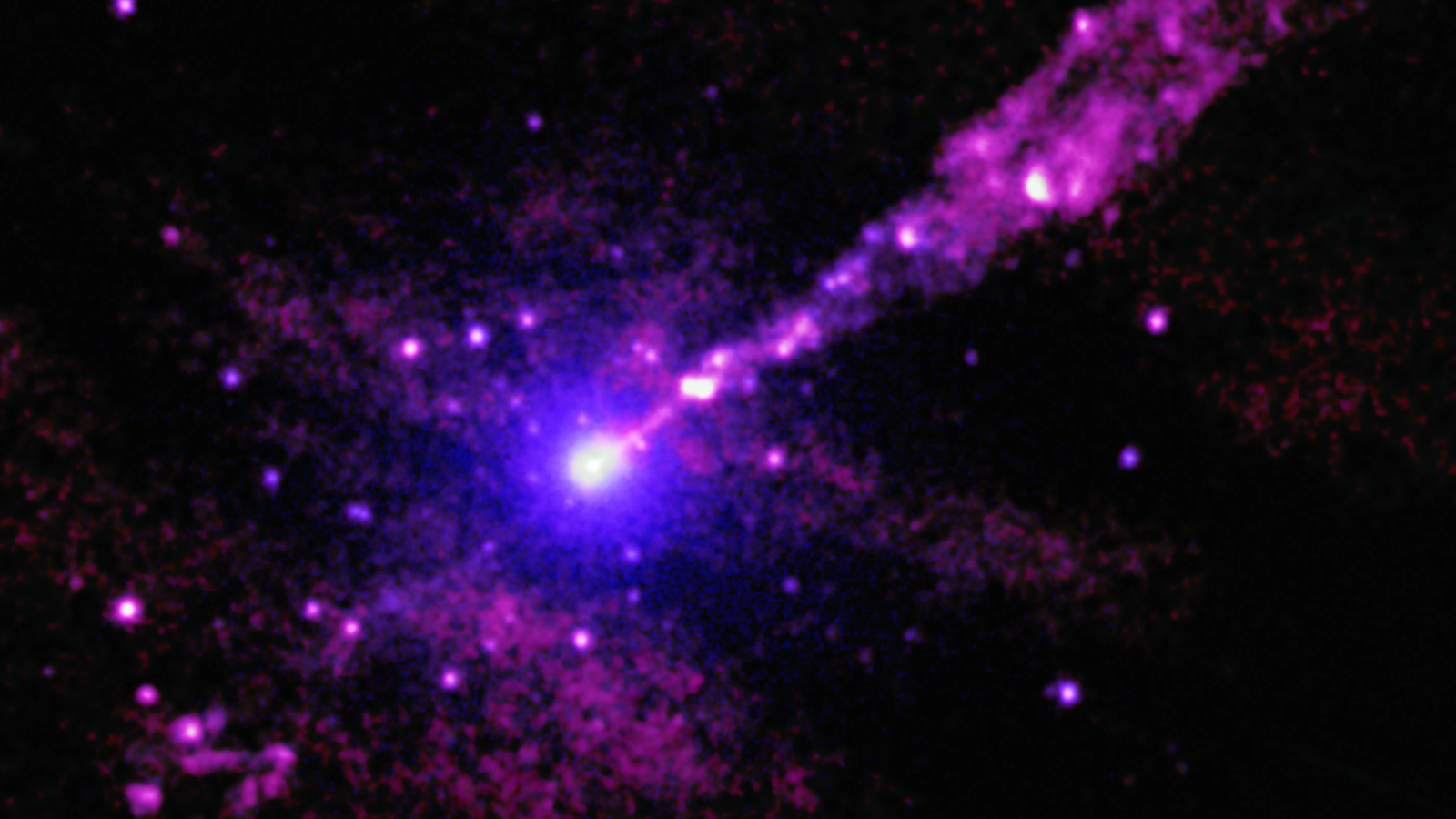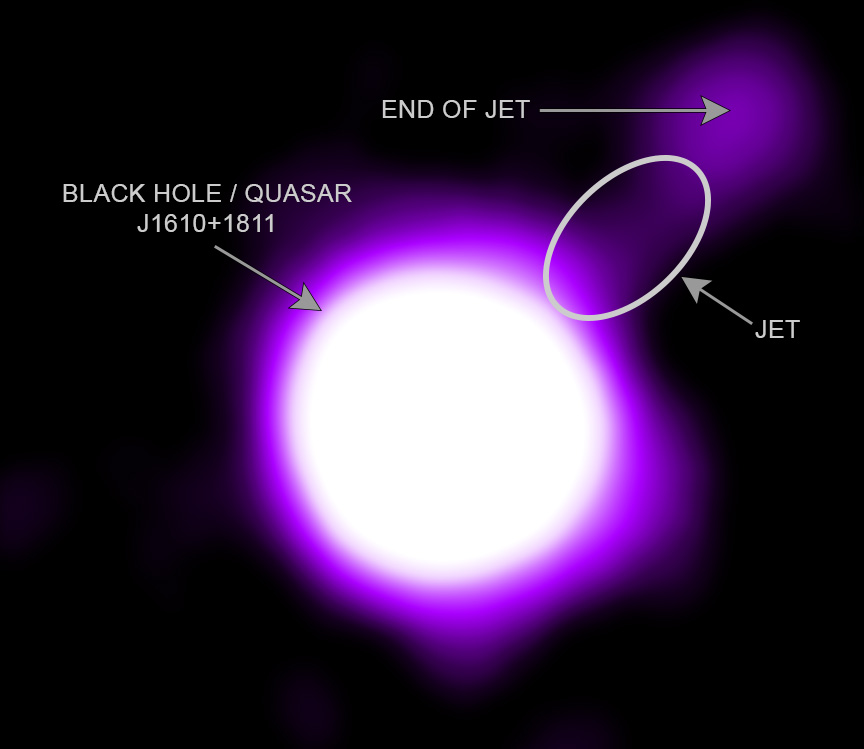Astronomers discover ultrapowerful black hole jet as bright as 10 trillion suns lit by Big Bang's afterglow
"It's like looking for candlelight in close vicinity to a flashlight that's blazing toward us."

Astronomers have discovered extraordinarily powerful X-ray jets blasting from two supermassive black holes that are so ancient that the jets shine in the afterglow of the Big Bang.
"They are transforming the first light of the universe into high-energy jets," Jaya Maithil, a postdoctoral research fellow at the Harvard and Smithsonian Center for Astrophysics, told reporters Monday (June 9) at the 246th meeting of the American Astronomical Society in Anchorage, Alaska.
Using data from NASA's Chandra X-Ray Observatory and the Karl G. Jansky Very Large Array (VLA), Maithil and her team found that each jet spans a whopping 300,000 light-years — nearly three times the diameter of our Milky Way galaxy. Each jet emerges from an actively feeding supermassive black hole, known as a quasar, located about 11.6 billion and 11.7 billion light-years away.
The researchers observed these immense structures as they appeared when the universe was just 3 billion years old, during a period when galaxies and their central black holes were growing at breakneck speed.

"These quasars are like cosmic time capsules," Maithil said. "If we understand them, we can understand how they were impacting the growth of their galaxy and the environment in which they resided."
One of the newfound jets, from a quasar known as J1610+1811, is visible in the Chandra image above. A slender, faint purple line extends from the quasar's brilliant white core toward the upper right, ending in a small, bright blob. A second, dimmer jet appears to shoot in the opposite direction, downward and to the left.

"It's like looking for candlelight in close vicinity to a flashlight that's blazing toward us," Maithil said.
Breaking space news, the latest updates on rocket launches, skywatching events and more!
Related: Hungry black hole shoots out bright X-ray jet 60,000 times hotter than the sun
What makes these jets particularly noteworthy is that they remain visible across billions of light-years. In a paper accepted for publication in The Astrophysical Journal, Maithil and her team suggested that the jets shine in X-rays thanks to interactions with the cosmic microwave background (CMB) — the faint relic radiation from the Big Bang left over after the universe cooled enough for starlight to travel freely for the first time, marking the end of the "cosmic dark ages."
Back when these jets formed, the CMB was far denser than it is today, filling space with a sea of low-energy photons. As electrons in the jets raced outward at near light speed, they slammed into these CMB photons, boosting them into the X-ray range detectable by Chandra, according to the new study.
This process makes them visible across cosmic gulfs, despite their proximity to the quasars' dazzling cores, the researchers said.
The jet from J1610+1811 clocks in at 92% to 98% light, carrying about half as much energy as all the light emitted by matter spiraling into the black hole — a staggering output equivalent to that from 10 trillion suns, the new study found.
The second quasar, J1405+0415, located 11.7 billion light-years from Earth, features a jet just as powerful. By combining Chandra's X-ray and VLA's radio data, the researchers calculated that particles in the J1405+0415 jet are traveling at 95% to 99% the speed of light.
"We're finding that some black holes may carry a bigger punch at this stage in the universe than we thought," Maithil said in a statement.

Sharmila Kuthunur is an independent space journalist based in Bengaluru, India. Her work has also appeared in Scientific American, Science, Astronomy and Live Science, among other publications. She holds a master's degree in journalism from Northeastern University in Boston.
You must confirm your public display name before commenting
Please logout and then login again, you will then be prompted to enter your display name.
